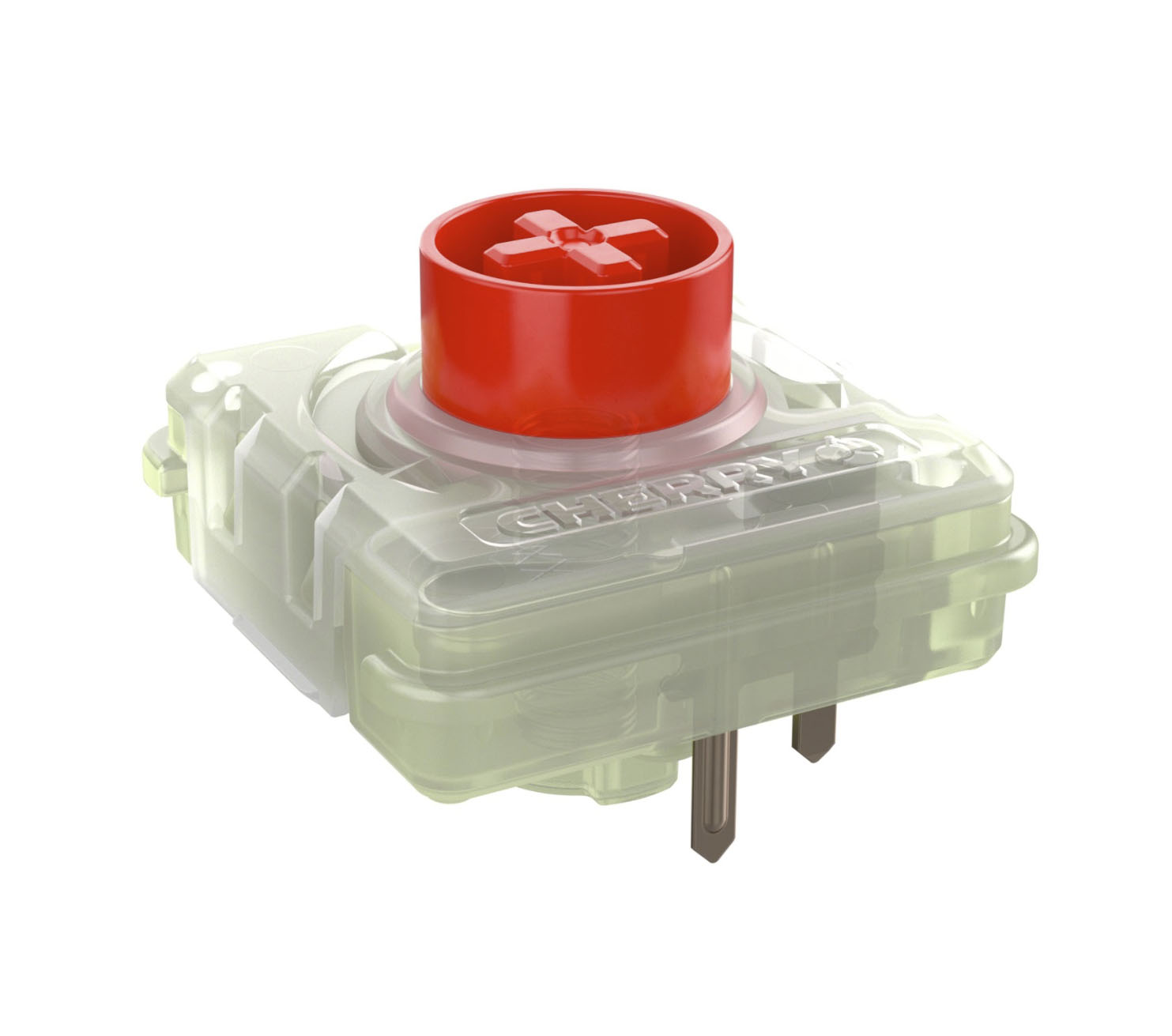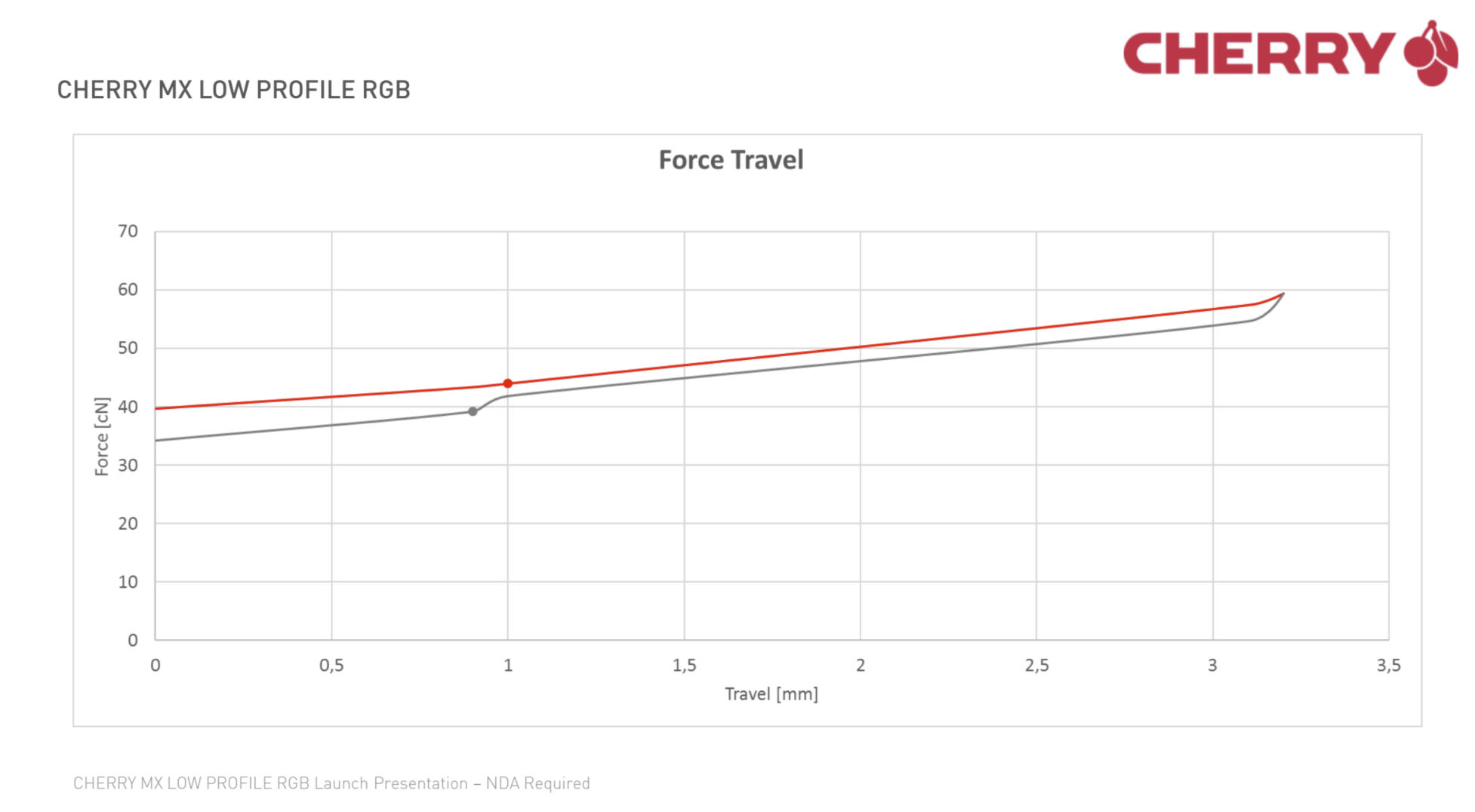For the first time in about 30 years, the mechanical switch market has a substantially new piece of technology instead of a modification on an old one. Cherry announced a high-precision switch targeted at notebooks and low-profile desktop keyboards. The switch uses a shallow design while maintaining the well-known characteristics of the standard MX Red switch. After meeting with Cherry, we learned that the company's R&D department had invested over 5 years to achieve the 11.9 mm design that does, after some simple side-by-side comparison, feel a lot like Cherry’s other MX linear switches, the black and red. The MX Low Profile RGB Red is about 35% shallower than the standard MX switches, which measure 18.5 mm. We also learned that the company was originally shooting for a 50-60% size reduction, but found that to be impossible if the standard Cherry MX characteristics were to be maintained. The switch was fully developed and built in Germany, which to der8auer’s approval, means that it fits the “German Engineered Perfection” mantra that we’ve seen in the industry.
Although the actuation characteristics remain about the same, the travel has been reduced from 4.0 to 3.2 mm. This leads to a shorter bounce time (typically 1ms) which results in higher switching frequencies for quick response gaming. Gold-Crosspoint technology is still in use to prevent corrosion or dust build up on the contacts, and the switch is rated for over 50 million keystrokes with no loss of quality. Contrary to what we were told during the meeting, one of the switch specifications is not what we originally thought. The IP rating is IP40, meaning it has no liquid resistance. This was likely just a miscommunication here due to the fact that the Cherry engineer we met with spoke German as his primary language.
Moving from the specifications to the design, the housing for the CHERRY MX Low Profile RGB Red has some interesting new elements. Like its RGB predecessors, it is transparent and designed for use with LEDs; however, unlike the standard MX RGB switches, the LEDs for this design sit directly on the keyboard PCB instead of being embedded into the switch. As noted in the images, there are cutouts in the bottom of the switch housing to accommodate SMT components, like surface-mounted LEDs, to benefit shallow design keyboards. Another design element of note is the cut out, circular channel light guide. Its purpose is to ensure uniform illumination through the housing, and it takes the place of the commonly used LED light pipes. Finally, regarding the circular shape around the traditional cross stem, Cherry informed us that it was the only way they could achieve the reduced size and MX feel while still keeping the stem stable. Other designs they tried rocked left-to-right or top-to-bottom.
For fans of other switches (shout-out to the MX brown with dampening rings), the MX Low Profile RGB Red is only the first variant that Cherry is rolling out. Cherry already has plans to produce other Low Profile RGB models, but to be clear, these are not replacing the standard MX line. The Low Profile MX Red, and other variants that follow, will have very similar properties to their standard MX counterparts. In the case of the Red, both have a linear switching characteristic and an actuation force of 45 cN. For objective comparison, check out the Force-Travel graphs in the article to demonstrate just how closely the two ended up being despite where engineers thought they might need to be initially.
Cherry had their own version and a Ducky sample of low profile gaming keyboards at the show, and users can expect these keyboards to hit the PC gaming market in the second quarter of 2018. Oh yeah, for all the especially technical fans out there, the official model number will be MX1B-L2NA.
- Patrick Stone

